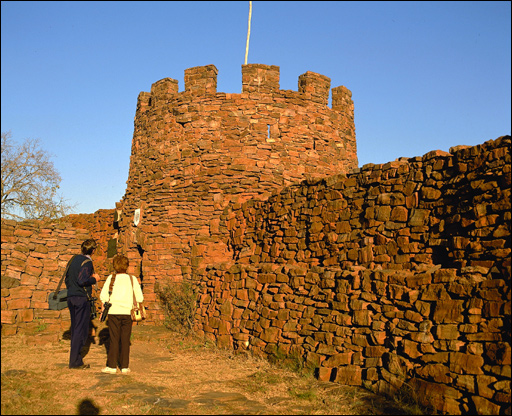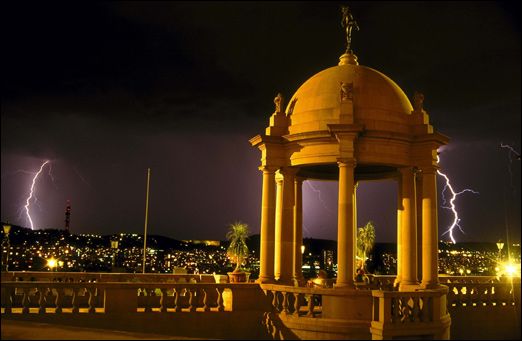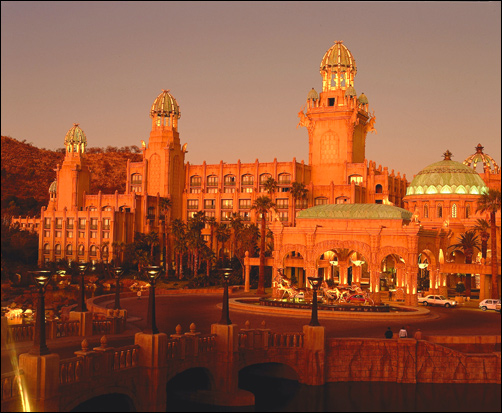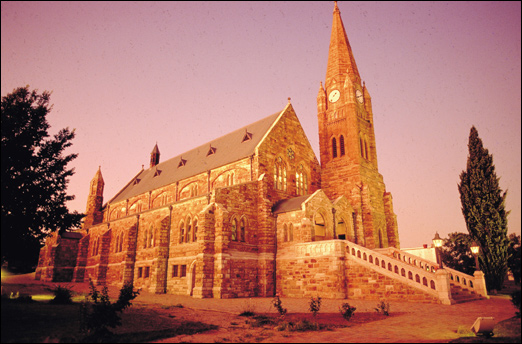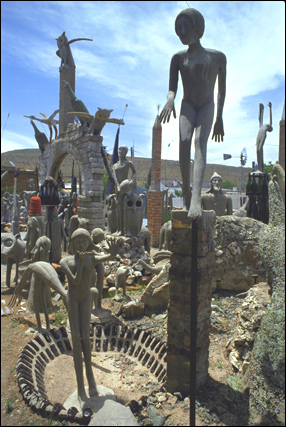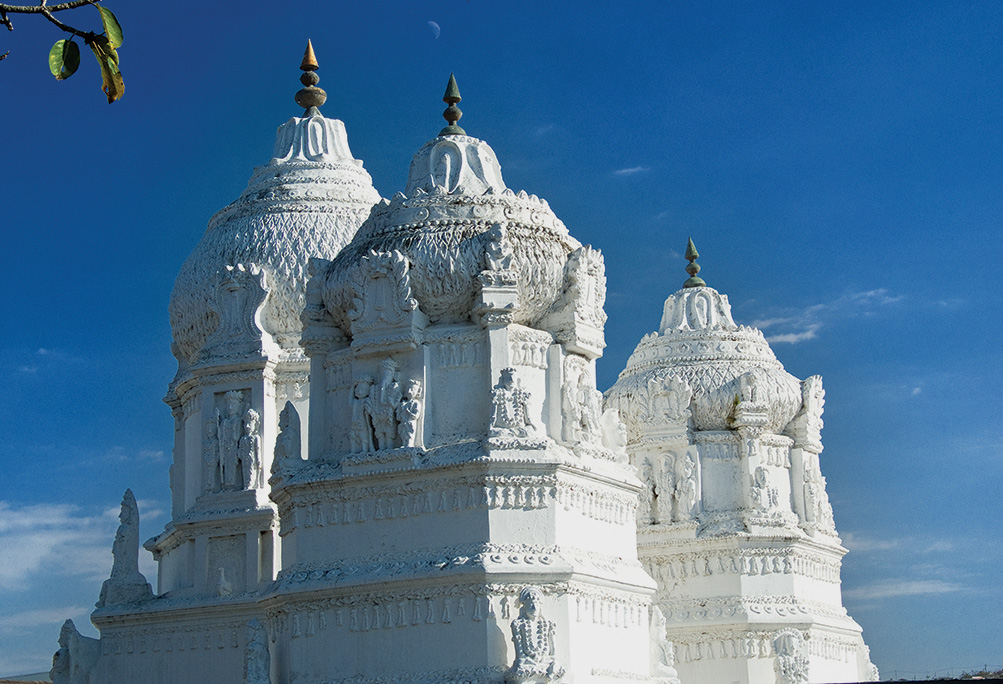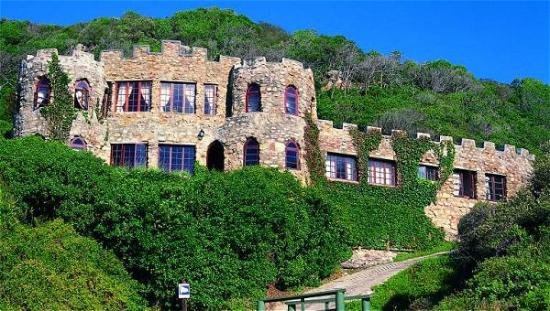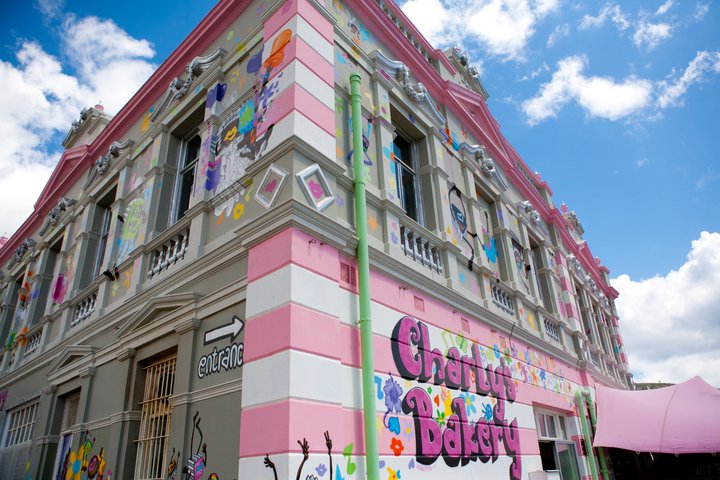10 Of South Africa’s Most Notable Buildings
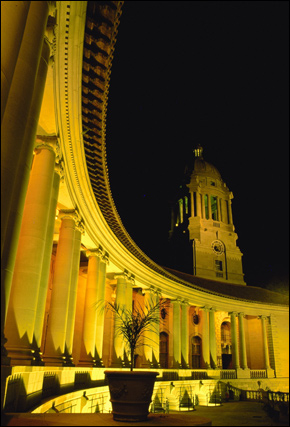
South Africa is known for its diversity and broad cultures and with that comes its most notable buildings in terms of aesthetic appeal or historical backgrounds. Check out the following buildings and their cool features as well as their background.
The Diamond building/ Eleven Diagonal Street- Johannesburg
Photo by Giles Ridley
Eleven Diagonal Street in Gauteng is owned by Absa Bank, is a unique Johannesburg building. It was designed by the renowned architect, Helmut Jahn, and resembles a multi-faceted diamond, with massive glass sheets placed at varying angles reflecting different images of the CBD.
Fort Merensky- Middelburg
Photo by Walter Knirr
Fort Merensky in Mpumalanga was built to protect Botshabelo (place of refuge), a mission station established just 5 km north west of Middelburg, in the 1860s by Alexander Merensky and Heinrich Grutzner of the German Missionary Society. Amongst other things the fort provided a refuge for black Christian converts fleeing their own community, where they were regarded as having betrayed the community’s ancestral beliefs. You can, by all accounts, climb the five metre high lookout tower at Fort Merensky – not very high, but it will give you an idea of the view from here. Visitors to the Botshabelo village and fort today speak about the juxtaposition of a number of different styles of architecture in evidence. Particularly the little fort, which stands on a koppie above the mission station, with a tower and walls that reflect a rather eclectic mix of western and Sotho architecture.
Union Buildings- Pretoria
Photo by Sarel van Staden
South Africa’s Union Buildings in Gauteng are the official seat of the national government, house the offices of the president and are located in Tshwane. They are a South African national monument.The buildings and amphitheatre are an easily recognisable landmark for most South Africans. The semicircular structure was designed by Sir Herbert Baker and took more than three years to build. It is 285m long and is divided into three sections – left offices, amphitheatre and right offices – that are each 95m in length. The lush gardens surrounding the buildings are a popular picnic venue, and the structure itself is considered an architectural masterpiece.
The Palace of the Lost City- Rustenburg
Photo by Walter Knirr
The Palace of the Lost City in the North West province was opened in December 1992 as Sun City’s flagship hotel. It is styled in opulent African colours and architectural features. The Sun City Palace is rated as one of the Leading Hotels of the World and works hard to maintain and live up to this sought-after status.The entrance hall of the Palace sets the precedent for this sophisticated hotel, with its high, intricately-painted ceilings, mosaic artworks, and golden zebra-hide upholstered furniture. Set within verdant gardens, each room in the hotel is fitted with luxurious, hand-crafted furniture, befitting royalty.
Klipkerk- Heidelberg
Photo by Jon Hrusa
At the foot of the Suikerbosrand, Heidelberg in Gauteng began in 1862 as a trading station built by a German, HJ Uekermann. A town was laid out around the store and named after Uekermann’s alma mater. During the First War of Independence Heidelberg served as capital of the Zuid Afrikaansche Republiek.In 1885 the Witwatersrand gold reef was discovered in the Heidelberg district and the office of the Mining Commissioner was established there. Heidelberg developed as a typical rural Victorian town. Many buildings dating back to the period between 1890 and 1910 have been preserved.This is a photo of the Klipkerk. It’s name meaning “stonechurch’. The cornerstone of this sandstone building was laid in 1890 and inaugurated on 13 March 1891.
The Owl House- Nieu Bethesda
Set deep in the Sneeuberg Mountains in the small village of Nieu Bethesda , the Owl House is a Karoo cottage and yard in the Eastern Cape, transformed between 1950 and 1976 by Helen Martins into a glass-encrusted wonderland and statue garden. The house and yard are open to the public daily (except Christmas day).Helen Martins returned to the town after years away and set about transforming her childhood home into a rich, magical wonderland.The Owl House and Camel Yard: She revamped her house by using mirrors and then glass to transform ordinary walls into glittering fields of colour. She crushed her own glass from bottles and used the milled shards as wallpaper. Outside she began making concrete statues, helped by a succession of workers. She dubbed the backyard the Camel Yard, so named because of the large number of camels that populate it, roughly a third life-size – many facing the metal wording on the southern fence that says “East / Oos”.
Photo by Keith Young
Giant Pineapple- Bathurst
Photo by Hein von Hörsten
The little hamlet of Bathurst in the Eastern Cape lays claims to the biggest pineapple on the planet! Standing 16.7 metres tall, this gigantic structure is not a cell phone tower in disguise; but rather a tribute to the agricultural success of the prickly fruit. Early farmers struggled to grow any crops here until the first pineapple top was planted in 1865. The interior boasts a tourist shop, static displays, and a great view. It’s a fun place to take the whole family and learn about the pineapple industry or find a little memento. Head to the Porcupine Pub afterwards and try their popular pineapple cocktails!
Gengaimman Temple- Cato Manor
photo by The KwaZulu-Natal Institute for Architecture
This group of temples was first constructed in 1918 and is still actively attended by devotees. The original wood-and-iron Gengaimman temple was built among mango trees, and has since been walled off from the adjacent uMkumbaan River in KZN. Note how the use of industrial materials illustrates the scope for versatility in interpreting Hindu architecture. The main temple, which is painted white, was built in 1932 by SP Chetty, its three towers skilfully sculpted in low relief in order to integrate the deities into the structure. The design is enhanced by the use of contrasting plain surfaces and reflected light.
Knysna Castle (Noetzie) -Knysna
Knysna Castles. Professional photos
Noetzie (originally known as Noetziekamma, a Khoisan phrase for ‘dark water’ )Ten minutes East of Knysna (Western Cape) lies a secluded cove boasting a pristine beach, a quiet estuary, a large variety of indigenous flora and fauna and an eclectic collection of classic beach houses and fanciful “castles”.No ancient battles or kingdoms lie in the Noetzie Castles’ history, but rather the spirit of pure fun and carefree holidays. Noetzie started out as a holiday destination for families living and working in Knysna and Oudtshoorn. Long before the winding road into it could carry the modern motor vehicle, adventurous groups seeking a quiet retreat would pack up their horse-drawn carts and make their way to the simple seaside huts and camping.
Charly’s Bakery- Cape Town
Photo by Matt Long
Charly’s bakery situated in Cape Town (Western Cape) is a destination and an attraction, and as such, well worth a visit. They are a family run business, and it is all about the family and their personal take on cake, colour and commentary. Their unique Cakes are boldly and colourfully decorated, just like their eye catching building which draws your attention from miles away.
pictures: courtesy of SA Tourism


